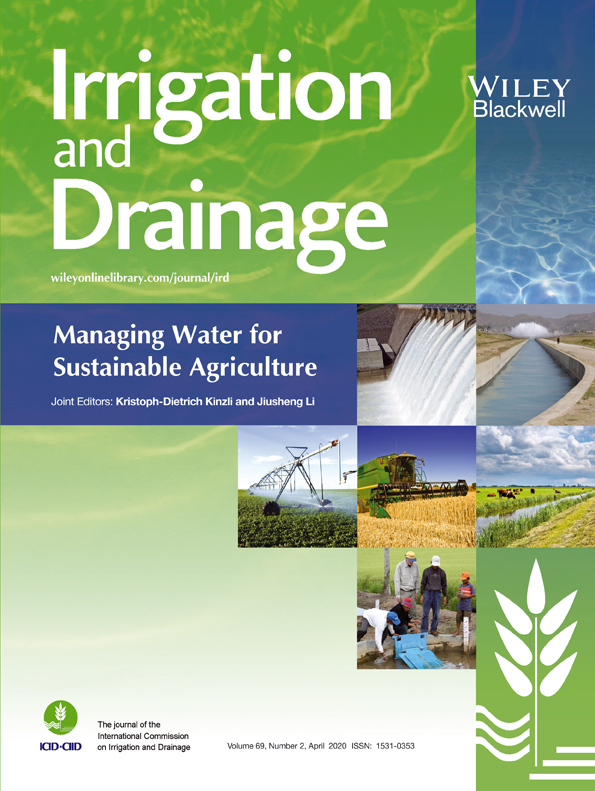PRESENT STATUS AND DEVELOPMENTS WITH RESPECT TO ROLES OF STAKEHOLDERS IN RELATION TO THE ICID VISION 2030†
Abstract
enThis paper discusses the global review on the present status of irrigation development and management in line with stakeholders' understanding and practices on Irrigation Vision 2030. The elucidation has addressed the related issues, with institutional and organizational aspects as the fundamental mechanism of stakeholder coordination. In line with the effort to comprehend the underlying status of irrigation and drainage development and management, five determinant aspects have been scrutinized in the analysis. These are: (i) human resources; (ii) institution and organization; (iii) technology for sustainable operation and maintenance (O&M); (iv) sustainable O&M funding; (v) effective regulatory instruments and enforcement. Particularly in the field of agricultural water management (AWM), it has been evident from a number of previous experiences that the absence or imbalance of an integrated relationship among any of the five aspects would bring about ineffectiveness of infrastructural functions. Therefore, institutional and organizational aspects must be reformed in line with the future direction stated by the ICID Vision 2030, among others for improving the crucial role of stakeholders toward sustainable AWM. © 2019 John Wiley & Sons, Ltd.
Résumé
frCe document discute de l'examen global de la situation actuelle du développement et de la gestion de l'irrigation en accord avec la compréhension et les pratiques des parties prenantes sur la Vision d'irrigation 2030. Les problèmes liés aux aspects institutionnels et organisationnels comme le mécanisme fondamental de la coordination des parties prenantes ont été abordés. Conformément aux efforts déployés pour comprendre l'état sous-jacent du développement et de la gestion de l'irrigation et du drainage, cinq aspects déterminants ont été examinés dans l'analyse. Ce sont: (i) les ressources humaines; (ii) institution et organisation; iii) la technologie pour l'exploitation et la maintenance durables (O & M); iv) financement durable de l'exploitation et de la maintenance; (v) des instruments réglementaires efficaces et leur application. Particulièrement dans le domaine de la gestion de l'eau agricole (GEA), il ressort d'un certain nombre d'expériences antérieures que l'absence ou le déséquilibre de la relation intégrée entre les cinq aspects entraînerait l'inefficacité des fonctions infrastructurelles. Par conséquent, les aspects institutionnels et organisationnels doivent être réformés conformément à l'orientation future énoncée dans la Vision 2030 de la CIID, notamment pour améliorer le rôle crucial des parties prenantes dans la gestion durable de l'eau agricole. © 2019 John Wiley & Sons, Ltd.




